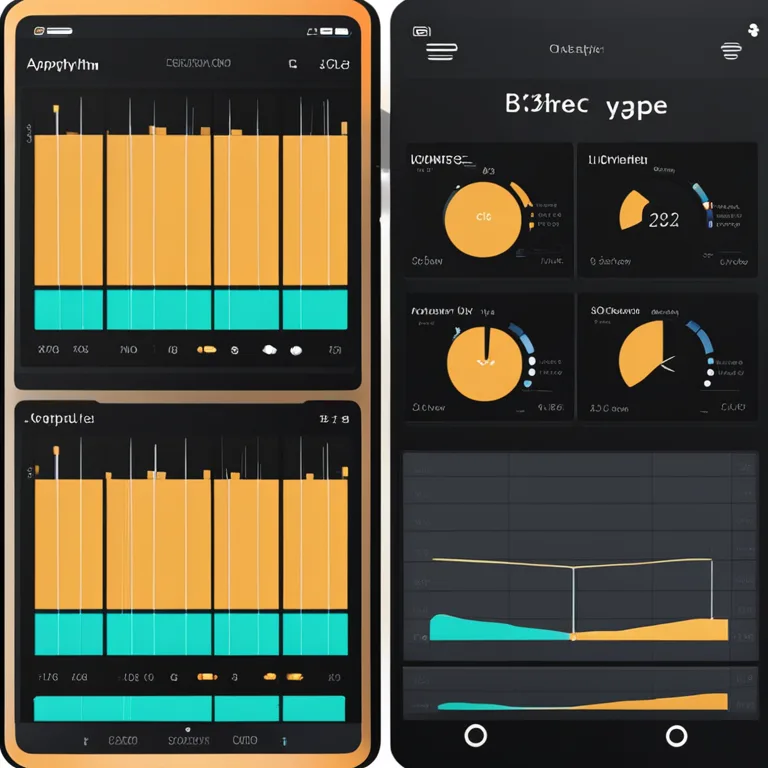
Biorhythm and Sleep Patterns: Harmonizing Rest Cycles
Delve into the intricate relationship between biorhythms and sleep, and learn how syncing these natural cycles can lead to improved rest and overall well-being.
article by Adrian Wallace
Introduction to Biorhythms and Sleep
Understanding the connection between biorhythms and sleep can be a pivotal step in enhancing the quality of your rest. Biorhythm theory suggests that our daily lives are influenced by innate biological cycles. These cycles are thought to affect our physical, emotional, and intellectual states, potentially impacting various aspects of health, including sleep. As we progress through different phases of these cycles, our need for sleep and our sleep quality can fluctuate. By correlating our sleep patterns with our biorhythms, we may uncover the optimal times for restful sleep.

The Physiology of Biorhythms
At the core of biorhythms are three main cycles: the 23-day physical cycle, the 28-day emotional cycle, and the 33-day intellectual cycle. These cycles ebb and flow from high to low periods, influencing your energy levels and capacities. When these cycles are in a high phase, we may feel at our peak, while a low phase might leave us feeling drained or out of sync. Adjusting our sleep based on these cycles can be crucial, as a well-timed rest during a low phase can replenish our energy more efficiently.

Charting Your Biorhythms
In the digital age of 2024, charting your biorhythms has never been easier. Various applications and tools are available that allow individuals to input personal data and track their cycles. With advanced analytics, these tools can provide personalized insights and recommendations for better aligning your sleep schedule with your biorhythm phases, thus offering a tailored approach to improving your sleep quality and duration.

Biorhythms and Sleep Quality
Sleep quality is not just about duration but also timing. Aligning your sleep schedule with your natural biorhythms could mean falling asleep faster, experiencing fewer awakenings, and reaching deeper levels of sleep. When you sleep in harmony with your body's natural cycles, you encourage restorative processes to occur at the most optimal times, reducing the likelihood of sleep disorders and disturbances.

Adjusting Lifestyle for Better Sleep
To align your sleep patterns with your biorhythms, consider lifestyle adjustments such as moderating caffeine intake and creating a consistent bedtime routine. Mindfulness practices like meditation or deep-breathing exercises can also promote relaxation, making it easier to drift off during your body's prime sleeping times. The key is consistency, as a regular schedule reinforces your natural cycles and supports harmonious biorhythms.
Advanced Sleep Technologies in 2024
In 2024, wearable technology and smart home devices have advanced to a point where they can actively measure and respond to our biorhythms. These technologies can now adjust the environment, such as lighting and temperature, to aid in syncing our sleep-wake cycle with our biorhythms. This intelligent adaptation helps create the ideal conditions for sleep, customized to each individual’s physiological needs.
Conclusion: Embracing Biorhythmic Sleep Patterns
Understanding and aligning with your biorhythmic cycles can greatly enhance your sleep and overall well-being. By charting your cycles and making mindful lifestyle adjustments, you encourage a symphony of internal processes to work in your favor. As we continue to stride into a future augmented with advanced technology, personal health insights will become increasingly accessible, further assisting us in achieving better sleep through biorhythmic harmony.
Published: 12/28/2023
Modified: 12/28/2023
More predictions
Come back here soon to learn more about yourself and your future


Unlocking Biorhythm Calculations
Learn the ins and outs of measuring your biorhythms to align with your natural energy cycles for enhanced well-being and decision-making.


The Practical Uses of Biorhythms in Our Lives
Discover how biorhythms can be applied to improve well-being and achieve a better understanding of personal cycles in health, decision-making, and relationships.


The Concept of Biorhythm Compatibility
Discover the concept of biorhythm compatibility and its role in personal relationships in this comprehensive guide.